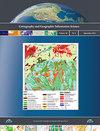An automatic approach to generating barrier-free qualitative schemes for color vision deficiency
IF 2.4
3区 地球科学
Q1 GEOGRAPHY
Cartography and Geographic Information Science
Pub Date : 2023-06-13
DOI:10.1080/15230406.2023.2215449
引用次数: 1
Abstract
ABSTRACT Hundreds of millions of people suffer from color vision deficiency, leading to confusion in the perception of maps. Barrier-free colors can reduce confusion and improve the readability of maps. However, most of these colors are manually designed by experts based on extensive experience. For most mapmakers, especially novices, creating barrier-free map colors is a challenge. In this paper, we focus on qualitative schemes, a color type that easily causes confusion for people with color vision deficiency, and propose an approach to automatically generate barrier-free colors. The proposed approach consists of two steps: 1) extracting the factors of barrier-free qualitative schemes, including color vision deficiency factors and cartographic rule factors, and characterizing them, and 2) building an optimization model using these factors to generate barrier-free qualitative schemes. The approach was tested with two experimental maps: a metro map for public use and a special-use land cover map. Twenty-two students with color vision deficiency were invited to read these maps and complete tasks. The results suggested that the map features using the generated barrier-free schemes were easy to distinguish for people with color vision deficiency. In addition, we recruited twenty-eight students with normal color vision to read the maps, and the results suggested that the generated schemes are effective for people with normal color vision as well.色觉缺陷无障碍定性方案的自动生成方法
数以亿计的人患有色觉缺陷,导致对地图的感知混乱。无障碍的颜色可以减少混淆,提高地图的可读性。然而,这些颜色大多是由专家根据丰富的经验手工设计的。对于大多数地图制作者,尤其是新手来说,创造无障碍的地图颜色是一个挑战。本文针对色觉不足的人容易混淆的颜色类型定性方案,提出了一种自动生成无障碍颜色的方法。该方法分为两个步骤:1)提取无障碍定性方案的因素,包括色觉缺陷因素和制图规则因素,并对其进行表征;2)利用这些因素建立优化模型,生成无障碍定性方案。该方法用两张实验性地图进行了测试:一幅用于公共用途的地铁地图和一幅特殊用途的土地覆盖地图。22名有色觉缺陷的学生被邀请阅读这些地图并完成任务。结果表明,使用生成的无障碍方案的地图特征对于色觉缺陷的人来说很容易区分。此外,我们还招募了28名色觉正常的学生来阅读这些地图,结果表明生成的方案对色觉正常的人也是有效的。
本文章由计算机程序翻译,如有差异,请以英文原文为准。
求助全文
约1分钟内获得全文
求助全文
来源期刊
CiteScore
5.20
自引率
20.00%
发文量
23
期刊介绍:
Cartography and Geographic Information Science (CaGIS) is the official publication of the Cartography and Geographic Information Society (CaGIS), a member organization of the American Congress on Surveying and Mapping (ACSM). The Cartography and Geographic Information Society supports research, education, and practices that improve the understanding, creation, analysis, and use of maps and geographic information. The society serves as a forum for the exchange of original concepts, techniques, approaches, and experiences by those who design, implement, and use geospatial technologies through the publication of authoritative articles and international papers.

 求助内容:
求助内容: 应助结果提醒方式:
应助结果提醒方式:


